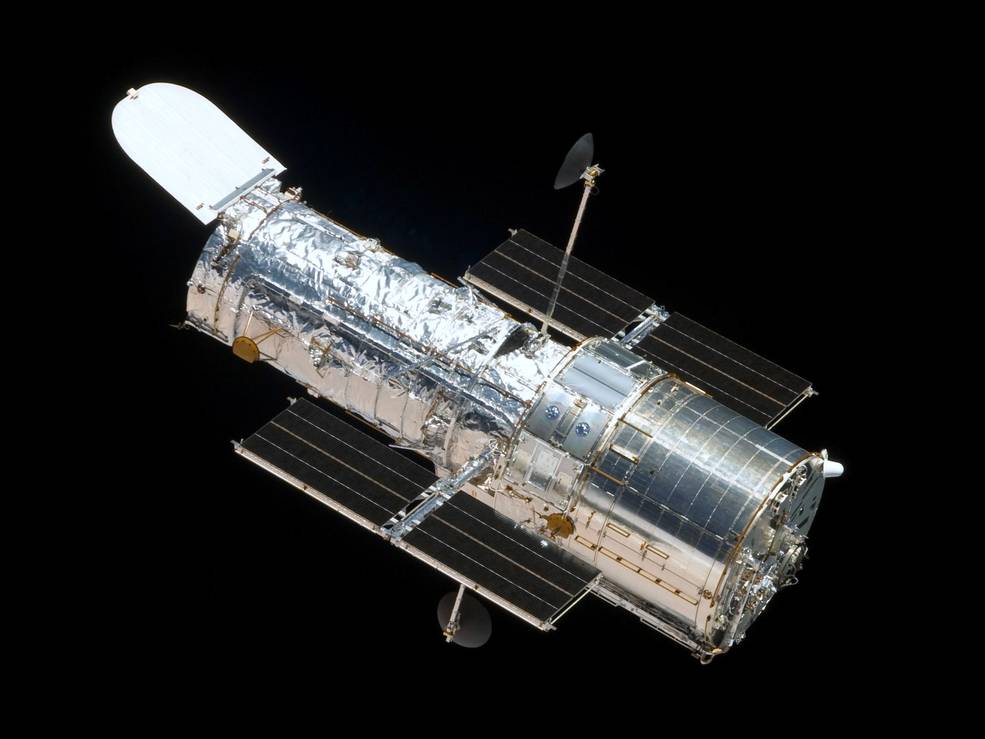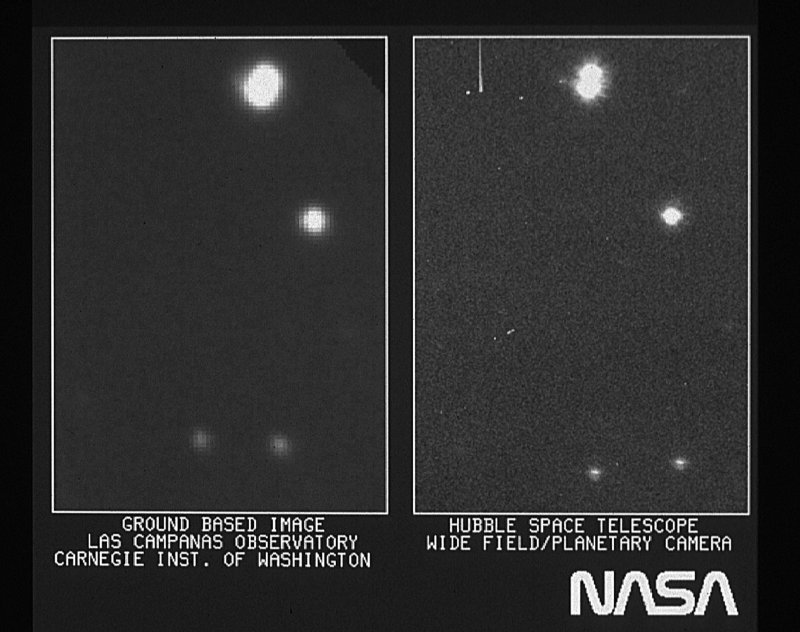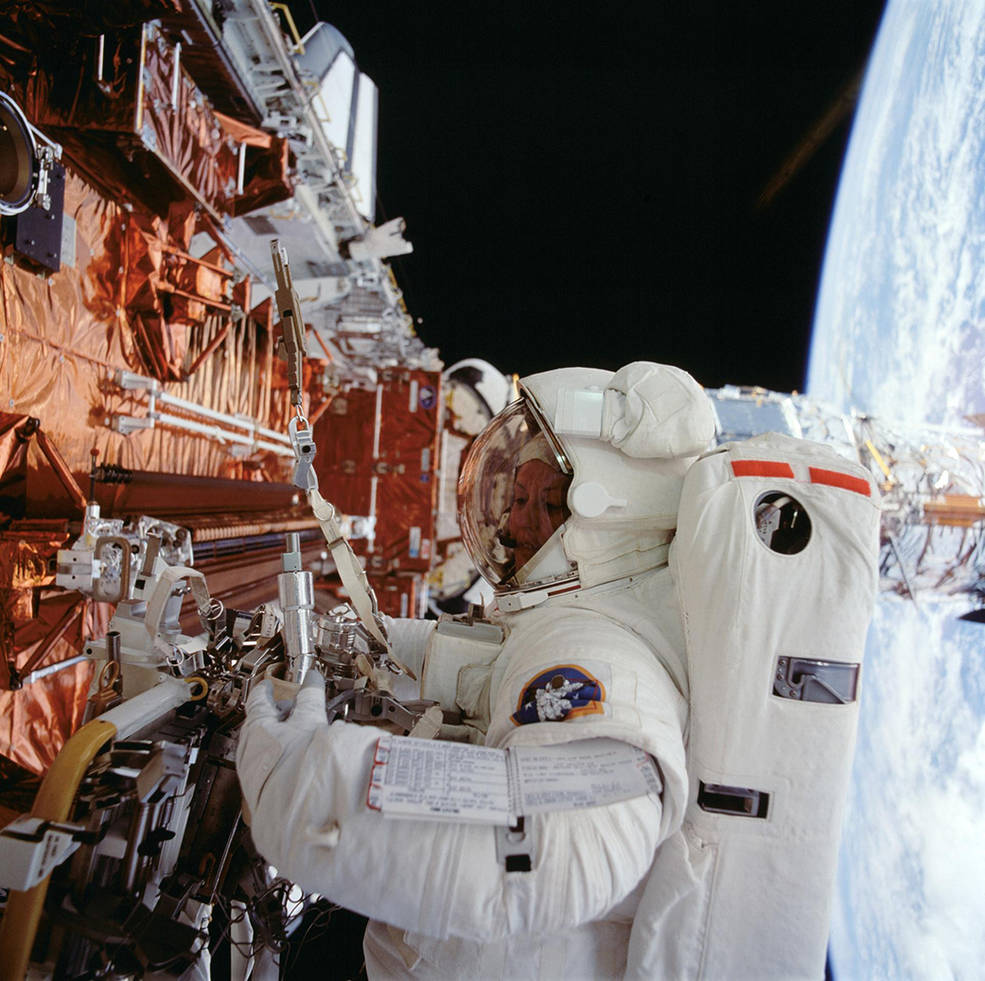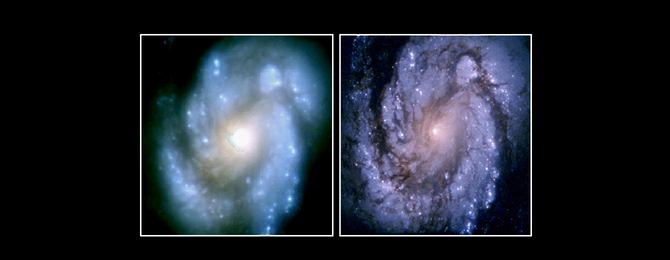“Liftoff of the space shuttle Discovery, with the Hubble Space Telescope, our window on the universe,” were the words uttered by George Diller as STS-31 lifted off into a partly-cloudy Florida sky. That day — April 24, 1990 – was one, indeed, that would shape how we saw the unending expanse of space. The cargo aboard Discovery, 30 years ago, would end up becoming the most prolific space telescope in history and would change not only how we thought about the universe, but the creation of it itself.

The United States space program was still reeling from the Challenger explosion four years prior, and the launch of Hubble was not only a chance to learn more than ever about the universe, but a chance for NASA to remake its image with the public as well.
However, the story of Hubble started much earlier than that.
The road to Hubble
From the dawn of humankind to a mere 400 years ago, all that we knew about our universe came through observations with the naked eye. When Galileo turned his telescope toward the heavens in 1610, the world was in for an awakening.
Saturn, we learned, had rings. Jupiter had moons. That nebulous patch across the center of the sky called the Milky Way was not a cloud, but a collection of countless stars. Within but a few years, our notion of the natural world would be forever changed. A scientific and societal revolution quickly ensued.
In the centuries that followed, telescopes grew in size and complexity and, of course, power. They were placed on mountains far from city lights and as far above the haze of the atmosphere as possible. Edwin Hubble, for whom the Hubble Telescope is named, used the largest telescope of his day in the 1920s at the Mt. Wilson Observatory near Pasadena, California, to discover galaxies much further than our own.
During the 1970s, NASA and the European Space Agency (ESA) began planning for a space telescope that could transcend the blurring effects of the atmosphere and take clearer images of the Universe than ever before. The Hubble telescope was the first major optical telescope to be placed in space, the ultimate mountaintop. Without the atmosphere to hinder its observations, and far removed from rain clouds and light pollution, Hubble has an unobstructed view of the universe.
“Hubble is really a time machine,” said Larry Dunham, Hubble’s chief systems engineer at NASA’s Goddard Space Flight Center, in an interview. “We’re looking at data from light years in the past. Hubble is giving us the opportunity to look back in time to see how things were formed.”
Like every good love story, this one has its ups and downs with Hubble being the knot that ties the marriage of human curiosity and the science with satisfies it. Also, like a good marriage – and unlike most satellites – it gets better and stronger with age. Fifteen years after its expected lifespan, she has still not given up the ghost and has some of her most important discoveries just ahead.
The most marvelous part of the telescope, of course, is the 94.5-inch (2.4-meter-wide) mirror. As Eric Chaisson, an American astrophysicist and author wrote in his book The Hubble Wars, “While not the largest ever built, Hubble’s mirror is assuredly the cleanest and most finely polished mirror of its size. If Hubble’s mirror were scaled up to equal the width of the North American continent, the highest hill or lowest valley would be a mere few inches from the average surface.”
Up to a slow start
The mirror was also the headline when Hubble’s debut picture was snapped. Four weeks after leaving Discovery’s payload bay, the telescope’s initial offering to the public was that of a somewhat blurry photo of binary star HD96755, about 1,300 light-years away. A spherical aberration caused by a manufacturing error was causing the telescope to bring in only 10 to 15 percent of a star’s light into focus, as opposed to the 70 percent it should be gathering. Picture after picture revealed in no clearer images. Engineers eventually found that the shape of the concave mirror, moving from the center to the outer edge, was too shallow by up to two microns — 1/50 the width of a human hair.

However slight, the error turned what was the most heralded telescope in NASA’s history into the laughingstock of the world. In fact, it wouldn’t be until December of 1993, three and a half years later, that the crew of Columbia would come to the rescue with a set of corrective optics to restore Hubble’s vision.
“The mirror flaw was a disappointment,” said Dunham. “It was really a disappointment that it showed up in the news. Even with the spherical aberration, the images we were getting were still better than anything we had ever had in the past.”
Replacing the mirror was not practical, so the best solution was to build replacement instruments that fixed the flaw much the same way a pair of glasses correct the vision of someone who is near-sighted. The corrective optics and new instruments were built and installed on Hubble by spacewalking astronauts during the STS-61 mission in 1993. The Corrective Optics Space Telescope Axial Replacement (COSTAR) instrument, which was about the size of a telephone booth, placed into Hubble five pairs of corrective mirrors that countered the effects of the flaw.

Once the mirror had a new set of spectacles, she now had the ability to look farther into universe than anything humans had ever produced. When astronomers pointed her to before had been an empty patch of sky in Ursa Major in 1995, they captured an image of over 3,000 galaxies too distant to be detected by other telescopes. (This was later called the Hubble Deep Field). Some of the galaxies Hubble found were so young, they had not yet begun serious star formation. Other deep field findings in the same area were performed, peering deeper into space each time. These were called the Hubble Ultra-Deep Field (released in 2004) and the Hubble eXtreme Deep Field (released in 2012).
Besides the extraordinary finds, Hubble was famous for another reason. Unlike other satellites, Hubble was made into a better machine as time wore on. Each service mission would renew and improve her capabilities.
“With the servicing missions have allowed us to upgrade both the science instruments as well as the spacecraft hardware,” said Dunham. “Actually, it took us so long to get it up there initially (due to the delay after the Challenger explosion), that by the time we finally got Hubble up, a lot of its hardware was already obsolete. The recorders we launched with were tape, and now we have upgraded those to digital. The original computer we had was six-point binary assembly coding with a huge 32k of memory. Now we’ve got a 46 computer up there that has megabytes.”

In February 1997 the second servicing mission took place, resulting in the replacement of degrading spacecraft components, and the installation of new instruments such as the Space Telescope Imaging Spectrograph (STIS) and the Near Infrared Camera and Multi-Object Spectrometer (NICMOS). STIS separated the light the telescope took in, and “dissected” it so that the composition, temperature, motion and other properties could be analyzed. With NICMOS, astronomers could see the first clear views of the universe at near-infrared wavelengths.
On November 13, 1999, the fourth of six gyroscopes failed, and the telescope temporarily closed its eyes on the universe. Traveling at speeds of five miles per second, the gyros measure the spacecraft’s rate of motion and help point Hubble toward its observation target. Unable to conduct science without three working gyros, Hubble entered a state of safe mode dormancy. Essentially, Hubble took a nap while it waited for help.
The third servicing mission was originally conceived as one of maintenance, but when the fourth gyro failed, NASA divided the work into two missions — and in the process, upheld the time-honored tradition of governments just making things more confusing by instead of calling them a third and fourth service mission, called them Servicing Mission 3A (SM3A) and Servicing Mission 3B (SM3B).
SM3A flew in December 1999 and the second in March 2002. During SM3A astronauts replaced all six gyroscopes with new ones, and installed a faster, more powerful main computer, a next-generation solid-state data recorder, a new transmitter, new insulation and other equipment. During SM3B, astronauts installed a new science instrument called the Advanced Camera for Surveys (ACS). ACS sees in wavelengths ranging from visible to far-ultraviolet, and can produce 10 times the science results in the same amount of time than the camera it replaced, the Faint Object Camera (FOC).
Servicing Mission 4 (SM4), the fifth – and last — visit to Hubble, occurred in May 2009. Astronauts installed two new scientific instruments: the Cosmic Origins Spectrograph (COS) and Wide Field Camera 3 (WFC3). Two failed instruments, the Space Telescope Imaging Spectrograph (STIS) and the Advanced Camera for Surveys (ACS), were brought back to life by the first-ever on-orbit instrument repairs. In order to prolong Hubble’s life, other components were replaced including new batteries, new gyroscopes and a new science computer. In addition, a device was attached to the base of the telescope to facilitate de-orbiting when the telescope is eventually decommissioned.
As things are now, that decommissioning date looks like it will be long in the future. Originally given a shelf life of 15 years, Dunham says that reentry of the satellite probably won’t occur until 2046, a 56-year span since it lifted off aboard Discovery. To put that in perspective, that is only five years less than when the telescope’s namesake reached his expiration date.
With the launch of the highly touted James Webb Telescope approaching nearer, the Hubble’s capabilities should only increase.“There are a lot of observations that people want to do in parallel with the Webb,” said Dunham. “The two spacecraft look at different light spectrums, so you can look at something with the Webb and get once sense of the object you’re looking at and then look at it with the Hubble and get another sense. Together you can produce some amazing science.”
Maybe it was appropriate that Discovery was the ship that took Hubble into orbit. The opportunities and discoveries we have made are more than the number of coins it took to produce it.
Famed poet Walt Whitman might have pegged it when he wrote:
“O to realize space!
The plenteous of all, that there are no bounds,
To emerge and be of the sky, of the sun and moon and flying clouds,
as one with them.”


